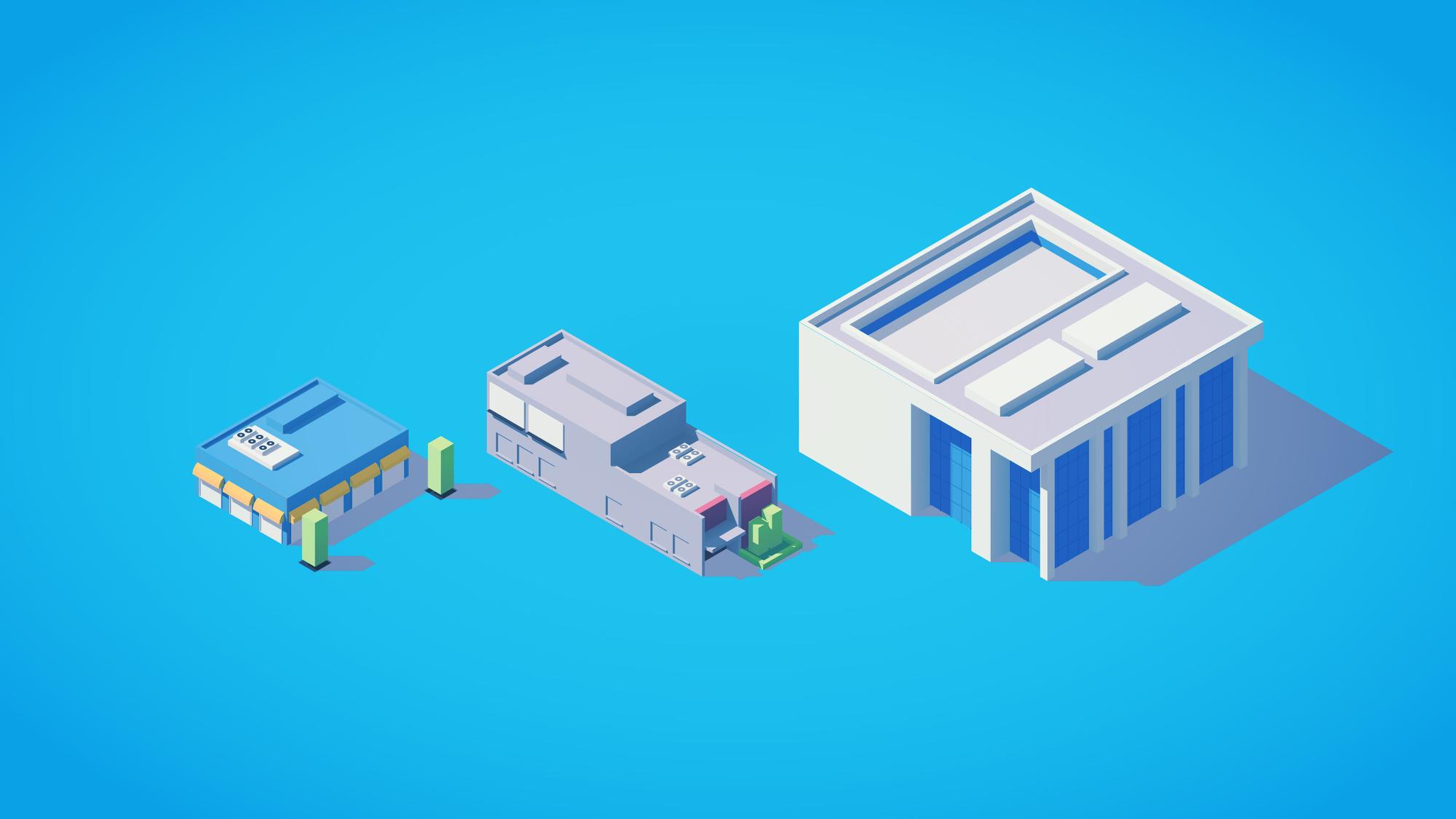By Luke Smith · 3/5/2020

All types of data centers provide power, space, and connectivity. Yet the size, location, and connectivity of a data center changes the types of customers it can serve.
At datacenterHawk, we break data centers down into five categories:
- Colocation data centers
- Enterprise data centers
- Hyperscale data centers
- Edge data centers
- Carrier hotels
We’ll break each of these down with what you need to know after the jump.
This is part five of Data Center Fundamentals, datacenterHawk’s guide to getting up to speed on the data center market. If you’re a new participant in the industry, then this is for you. Instead of analyzing deep market trends, we’ll be covering the basics one step at a time. Be sure to subscribe to our monthly update to know when we release future topics.
If you would like to sign up for our free official Data Center Fundamentals email course, click here.
Colocation Data Centers
Customers lease power and space from a data center provider in colocation data centers. The facilities themselves come in a variety of forms, but most can meet a wide range of needs.
Most colocation data centers are located in the suburbs of larger cities, although there are other located near the city's core. The suburbs offer larger parcels of land, greater setbacks and provide data center providers with a larger pathway to grow.
The emergence of colocation over 20 years ago created the competitive data center industry we see today. Leasing data center colocation infrastructure after the 2008 US recession allowed customers to save their capital and pay over time. Since then, we've seen continued growth in the colocation market.
Digital Realty, Equinix, CyrusOne, CoreSite, and QTS are some of the largest colocation data center providers.
Enterprise Data Centers
Some companies choose to own and operate their own data center facilities. We call these facilities "enterprise data centers".
Companies have different reasons for owning and operating their own data center infrastructure. Some choose this path because they want the privacy and security of their own facility. Companies with larger requirements might choose this strategy to control costs.
All major markets have enterprise data centers. Areas like Chicago, Dallas, and Phoenix have enterprise data centers because of the businesses located in the region. Areas like Quincy, Omaha, Des Moines and New Albany have enterprise data centers because of the tax incentives and low power costs they provide.
Because data center users are using more colocation and cloud today instead of building their own, enterprise data centers are less common today than ten years ago.
Hyperscale Data Centers
Hyperscale data centers are large, scalable facilities. Companies with massive infrastructure needs find them attractive. Data center operators first built these facilities for large, public cloud providers. While these companies can build data centers themselves, leasing provides flexibility and speed to market, which created some of the largest requirements in the industry.
Northern Virginia, Northern California, Phoenix, Dallas, and Chicago have all seen hyperscale development and leasing.
Digital Realty, CyrusOne, QTS and CloudHQ are some of the providers focused on meeting hyperscale demand.
Edge Data Centers
Edge data centers emerged recently in the data center industry. and provide data center services where the end-users are.
Instead of a single large data center servicing a large region, edge data centers are smaller facilities spread out to serve smaller areas of a region. This provides lower latency connections from the end-user to the data center infrastructure and reduces traffic on major fiber lines.
A great use case is Netflix. People want quick access to Netflix content. It doesn't make sense to route them to a data center in the a major market 200 miles away. With a closer edge data center, they can get the content much faster.
VaporIO, EdgeConneX, TierPoint, Cyxtera, and Compass are a few providers that are focus on edge services.
Carrier Hotels
Carrier hotels are the primary internet exchange point for all data traffic in their area. They emphasize having more telecom and fiber providers in the building than a typical colocation data center.
One of the largest carrier hotels in the world is the One Wilshire building in Los Angeles. Over 200 carriers connect to the building, making it the primary connectivity hub for all traffic on the West Coast.
Carrier hotels are typically located downtown where fiber infrastructure is the most mature. Larger carrier hotels are also located in coastal cities like Los Angeles, Seattle, New York, or Miami to act as an anchor point for sub sea cables. Creating such a dense fiber ecosystem at a facility takes a lot of time and effort. As a result, most markets have only 1-3 true carrier hotels.
Carrier hotels will increase in value as network maturity grows more important over time.
This was part five of Data Center Fundamentals, datacenterHawk’s guide to getting up to speed on the data center market. Be sure to subscribe to our monthly update to know when we release future topics.
